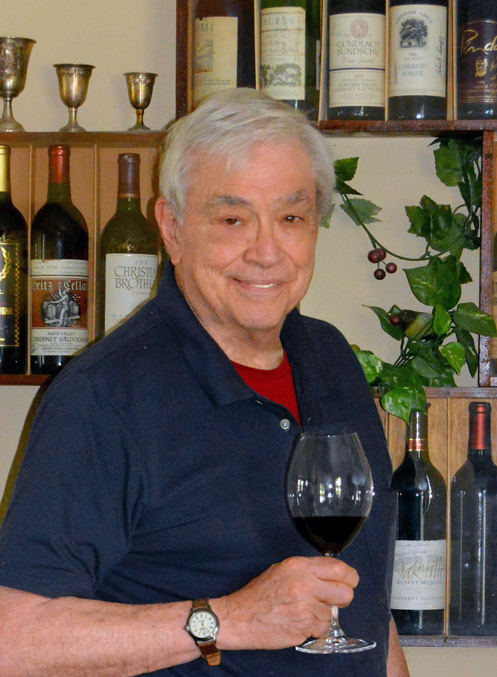Scammers, scoundrels, scallywags and cheats, the wine industry, like almost every facet of modern business, also has people looking to make a “fast buck†by whatever means possible. Fortunately for us, the consumer, there are government agencies set up in every wine producing country to protect the public from these cheats, however, no matter how much we watch, there will always be someone who will try to beat the system.
Chaptalization, the adding of sugar to unfermented grape juice to raise the alcohol level of a wine, is one of the most prevalent “rip offs.†Some countries do allow, under supervision, a slight chaptalization to cover a bad growing year when the grapes tend to have low sugar. These nations include France, Germany, and the United States with the exception of California where it is prohibited by law as it also is in Australia, Austria, Italy and South Africa. Unfortunately, there is no notification of the added sugar and that it is not a pure grape product. Unfair, yes, but unfortunately, a fact of life.
Fraud need not be perpetrated by criminals and scam artists; many times it happens right at the vineyard, distributor or winery. In France, it is common practice for smaller wineries to sell their wine to a negociant, a middle man, who will bottle, label and distribute wines. It can also prove to be the perfect venue for a bit of inappropriate shenanigans. Among the most famous wine fraud case was that of the highly regarded wine negociant Henri Cruze, who was implicated in the blending of cheap Algerian and Spanish winewith a bit of Lesser French wines and labeling it as an authentic and considerably more expensive Bordeaux wine. The fraud was discovered, the wines confiscated and destroyed and the company slapped with a huge fine.
Even the great Georges Duboeuf, known as the “king of Beaujolais,” was not beyond temptation. He was caught blending grapes from classified Beaujolais vineyards with grapes from the less significant Beaujolais-Villages vineyards and labeling them as the “real thing.†He pled guilty and was fined $30,000 proving that it is almost impossible to resist temptation no matter who you are.
In 1988, an employee at Chateau Giscours, classified by the French Government as one of the finest vineyards in all of Bordeaux, revealed that the château had illegally blended lesser vintages of the property into more valuable ones, which were then sold at the higher price to unsuspecting clients proving that even the best of them are capable of a bit of chicanery to increase profits.
If you believe that art and antiquities fraud is rife, it is nothing compared to the counterfeiting of wine. All that is necessary is a copy of a rare label, a copying machine, a bottle of wine and some poor, unsuspecting soul is going to get ripped off. There was a case in Florida where a local wine merchant was buying empty bottles of famous wines, refilling them with cheap wine and selling the counterfeit to unsuspecting collectors at phenomenal prices. A 1939 counterfeit Burgundy was sold by the unscrupulous wine dealer to a gullible Arab customer for $3,000.
The sedate, picturesque nation of Austria was not spared its red faced wine scandal. After several years of bad weather and poor harvests, the 1982 vintage proved to be a bumper crop; but a bumper crop of sour grapes. To rectify this problem, diethylene glycol, a component of antifreeze, which can cause brain and kidney damage if ingested, was added to the wine as a sweetening agent. The problem was quickly discovered and the “doctored†wine pulled from the market before any damage was done. It did however put a large dent in Austrian wine sales for many, many years.
It is our opinion that if you are a collector or interested in great wines, the ancient Roman admonition of Caveat Emptor, let the buyer beware, be instituted, because if you don’t Caveat, the Emptor is going to get swindled.
 High Vacuum Engineer: Senior Technical Adviser and Feature Writer for Modern Photography Magazine (1967-1973), co-founder of Together Vineyards, an experimental vineyard in South Florida which was the southern most registered vineyard in the Continental United States. Co-Author of several books on Home Wine Making, Home Beer Making and Distillation of Spirits. Co-owner of Camera & Video Repair Institute in Sunrise Florida.
High Vacuum Engineer: Senior Technical Adviser and Feature Writer for Modern Photography Magazine (1967-1973), co-founder of Together Vineyards, an experimental vineyard in South Florida which was the southern most registered vineyard in the Continental United States. Co-Author of several books on Home Wine Making, Home Beer Making and Distillation of Spirits. Co-owner of Camera & Video Repair Institute in Sunrise Florida.
Great stuff, loved this article!